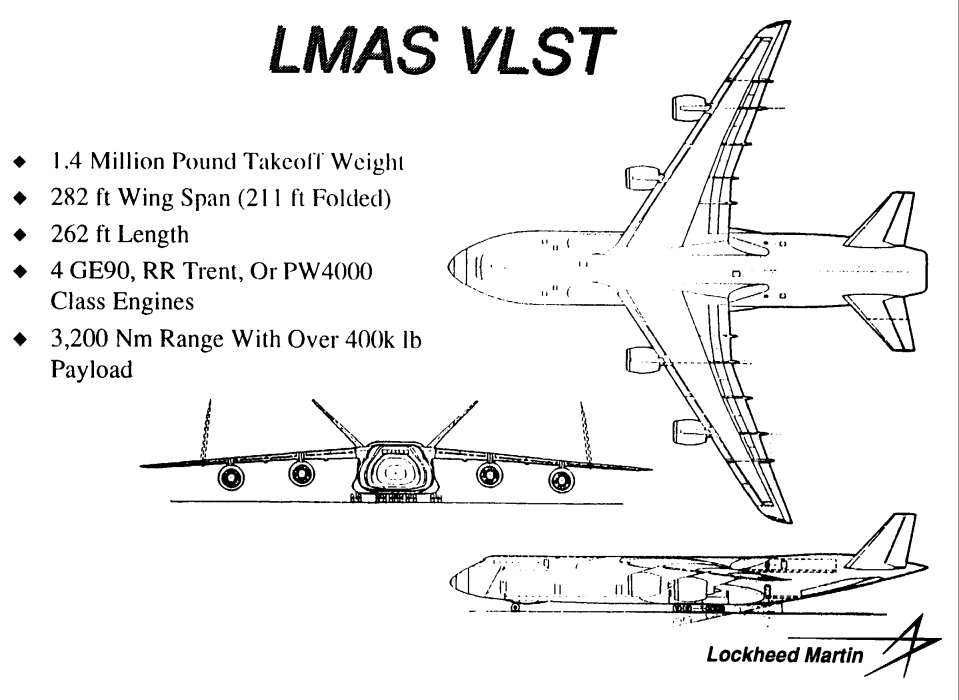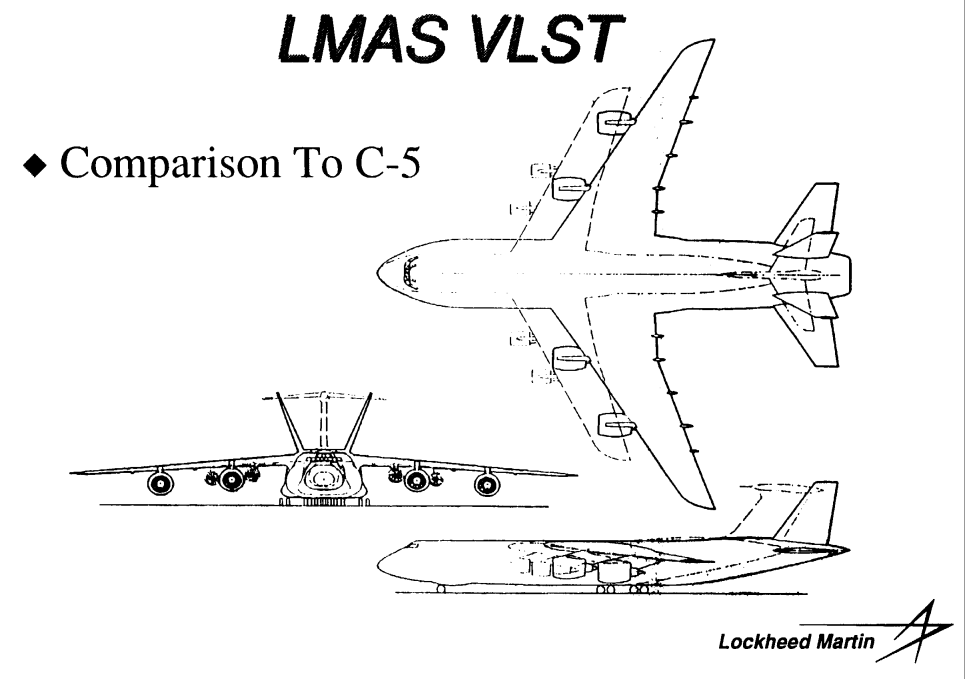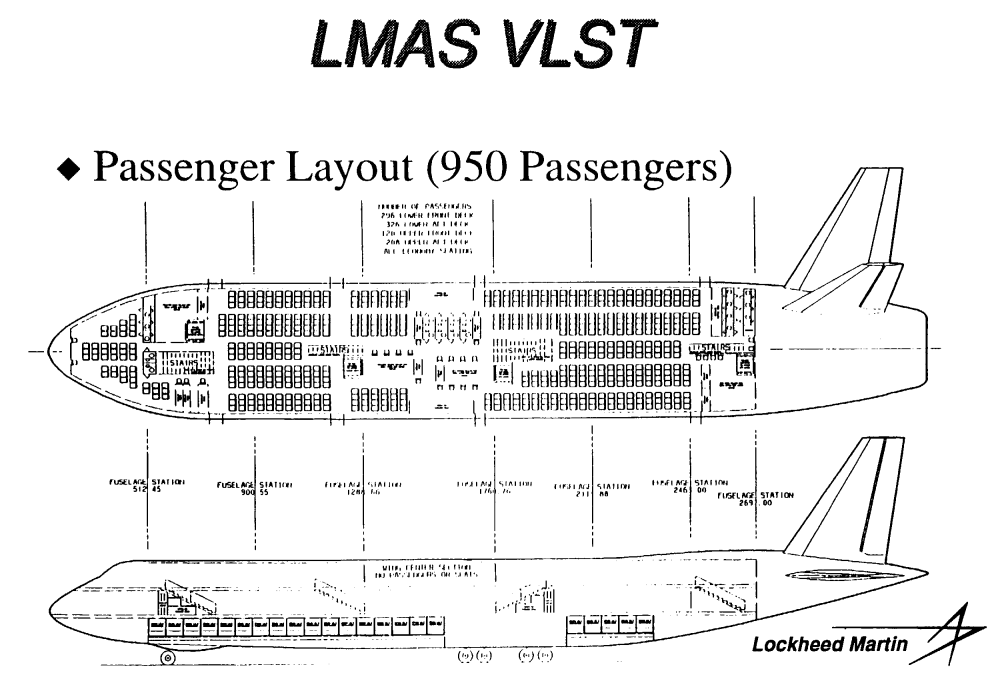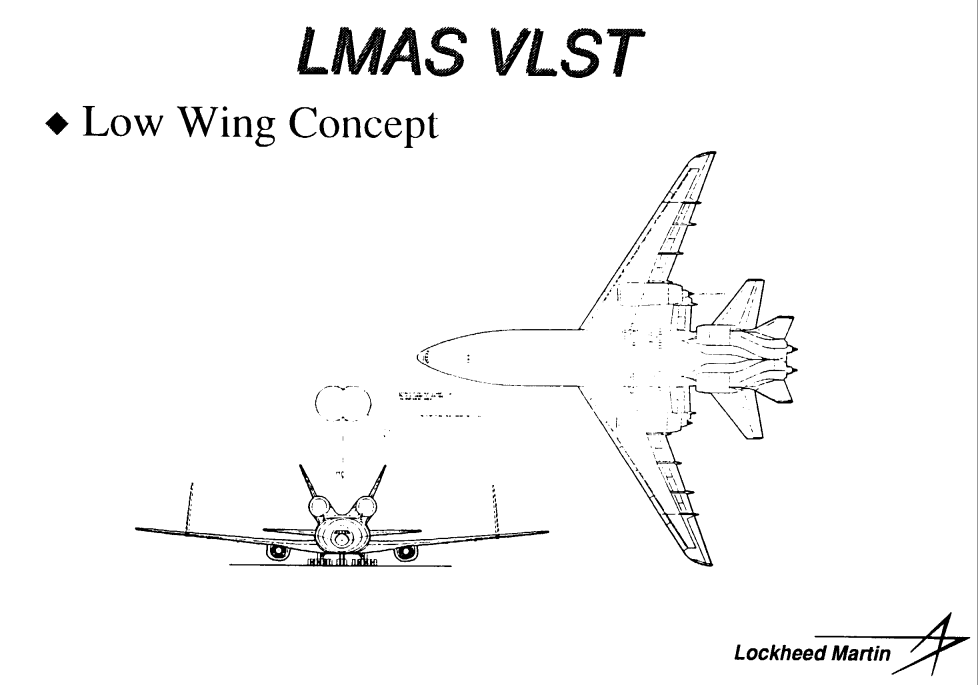Dec 112009
From circa 1996, a design for a large transport aircraft that could fulfill several missions:
1) Passenger transport
2) Cargo airlift
3) Military airlift
From the side, it looks a *lot* like a C-5 Galaxy. But the fuselage is considerably widened.
And a somewhat different configuration to do the same job. No dimensions were given, but the wings look the same, so the span was probably the same.
12 Responses to “Lockheed Very Large Subsonic Transport”
Sorry, the comment form is closed at this time.





This monster dwarfs the Airbus A-380.
Did it was inteded only for civil use?
And what kind of airport could support a giant like that?
They should build it. Give the Euro-peons more penis-envy.
Scott, do you have any more specs on these? like empty weight/TOGW?
Difficult to pressurize a fuselage of that shape.
Other than that though it looks really impressive, and you could do some really wild things on the passenger variant with that wide of a cabin to work with.
As a military airlifter it would be a real terror.
It doesn’t look any too good from the speed or drag viewpoints though.
> do you have any more specs on these?
Nope. Just what you see on the wall, pal.
950 troops? That would make such an aircraft a very tempting target for interception by the enemy. Ditto however much cargo could be crammed into it.
Jim
makes an Antonov AN-225 look bad
A fuselage shape like that would actually give you some lift in flight, like a less extreme version of the Burnelli aircraft designs.
I don’t know why, but this and the similar Airbus and Tupolev wide-body designs really appeal to me aesthetically, maybe because they’re just different than the norm. Of course, as noted, pressurization becomes a challenge when the fuselage is a non-cylinder.
When I first saw the exterior drawings, I assumed they had put two cylindrical passenger compartments side-by-side in one wide fuselage, sort of like a flying Typhoon submarine, with unpressurized cargo or fuel stowage between them in the top and bottom voids where their sides met.
Although you could put some sort of bracing structures between the top and bottom of the wide fuselage in the passenger version to keep the thing in its flattened form under pressurization, that removes a big advantage that the cargo version would have in being able to handle very wide loads….unless the cargo version was to have the main fuselage unpressurized.
Sure the cross section is very critical to presurized but its possible Lockheed Martin and Antonov have the experience of the C-5 and An-124 respectively cargo market or trade will say to it be rental
In 1995 Popular mechanic published a similar lockheed but with a monster twin enginee former Locheed georgia engineer Tony Hays explained this conventional aproach, I picked a lot of information and drawed a 2D cad